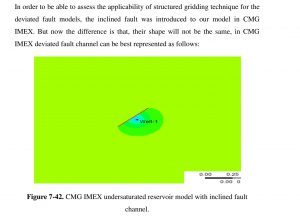USE OF VORONOI GRIDDING IN WELL TEST DESIGN
Abstract:
One of the most efficient tools to accurately characterize the reservoir and its nature is well testing. In the literature, well testing sometimes is referred as Pressure Transient Analysis (PTA). For the development strategy of the field both technical and economic considerations are involved. In order to perform well testing, firstly it needs to be correctly designed, otherwise well testing will not yield reliable information about the reservoir. There are both analytical and numerical techniques for the well testing.
One of the main aim of this study is to compare analytical methods commonly used in well test design against the numerical simulators by taking into account different reservoir models. These models were built using a commercial black oil simulator called as CMG IMEX by considering various scenarios, such as simple oil reservoir models with and without gas phase, reservoir models in different shapes, models with different fault channel orientations with respect to grid orientations (vertical and inclined), one well model versus two wells model in which they are producing close to each other to see the superposition effect on well test design. For this part it can be concluded that under ideal circumstances, analytical calculations can be somewhat reliable, but with more complex reservoirs where inclined faults, availability of a gas phase and several wells, numerical simulators yield more accurate and reliable information for the well test design procedure. In the second part, the aim is to assess unstructured gridding simulation – Voronoi gridding applicability in well test design procedure by comparing against structured gridding simulation results. Comparisons showed that under simple and ideal reservoir parameters, they can yield somewhat similar pressure results. But with inclined fault model that is built by using Ecrin Rubis module, it is concluded that Voronoi gridding gives more realistic and accurate results due to its flexibility on representing deviated fault channels.
Six different cases of different values of production time, production rate, and shutin time are studied to check how these variations affect the well test design. Based on the comparisons done using Horner plots generated for each case it is concluded that using a numerical simulator is the best way to appropriately design a test in order to select optimum value for each parameter.
Keywords: Reservoir, well testing design, Voronoi gridding, Horner Plots, CMG IMEX, Ecrin Rubis, fault




